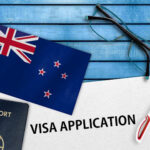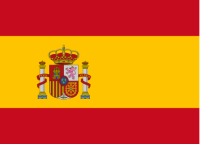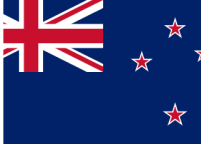As of June 26, 2024, New Zealand Immigration has implemented substantial alterations to its Accredited Employer Work Visa (AEWV) program. This program, a popular choice for skilled workers aiming to work and settle in New Zealand, has significantly changed.
These updates affect visa holders in the low-skill category ANZSCO levels 4 and 5 roles. Here’s an easy-to-understand explanation of the recent changes and their effects on low-skilled immigrant workers.
Understanding ANZSCO Levels 4 and 5 Roles
ANZSCO stands for the Australian and New Zealand Standard Classification of Occupations. It categorizes jobs into different skill levels, ranging from 1 to 5.
- Level 4 Jobs: These occupations correspond with NZ Register Level 2 or 3 qualifications or an AQF Certificate II or III. Relevant work experience of at least one year can substitute for educational qualifications, and specific jobs also require additional practical experience. Examples include sales assistants, truck drivers, and receptionists.
- Level 5 Jobs: These roles require an NZ Register Level 1 qualification, AQF Certificate I, or compulsory secondary education. Some jobs may also call for a brief period of on-the-job training. Examples include fast food cooks, cleaners, and farm workers.
Key Changes
Restrictions on Visa Sponsorship
AEWV holders in ANZSCO levels 4 and 5 can no longer sponsor visa applications for their partners and dependent children. Workers in these roles cannot bring their families through sponsorship as before, making it harder for families to stay together.
Independent Application Option
Partners and children of affected AEWV holders can apply for visas separately but must meet specific criteria independently. This can be more complicated and expensive for families.
Broader Policy Alignment
These updates follow changes in 2024, requiring migrants in lower-skilled ANZSCO level 4 and 5 positions to prove their English language skills. Additionally, minimum skills and work experience requirements are now mandatory for most AEWV roles.
Impact on Low-Skilled Workers Aspiring to Settle in New Zealand
For low-skilled workers aspiring to settle in New Zealand, these changes present significant challenges:
- Family Separation: They can no longer sponsor family members, complicating bringing loved ones to New Zealand.
- Increased Application Complexity: Families must apply for visas separately, increasing the complexity and cost.
- Higher Standards: Meeting new English language and work experience requirements may take time, reducing eligibility for many.
Exemptions from Changes
The recent updates do not affect the following:
- People who already hold visas as a partner or dependent child.
- AEWV holders in ANZSCO level 4 and 5 roles have a pathway to residency, such as the Green List or sector agreements with residency pathways.
- Those earning at least 1.5 times the median wage for the Skilled Migrant Category.
- People with an application as a partner or dependent child in progress will follow the old rules that were in place when they applied.
Nationalities Impacted by These Changes
Below is the data on Skilled Work Visas granted by nationality, giving an idea of the nationalities most likely to be impacted:
Table: Skilled Work Visas decided (people) by nationality; Data for the period: 1 July 2013 and 29 February 2024
Nationality | Skilled Work Visas Decided |
India | 111,826 |
Philippines | 99,031 |
Great Britain | 42,872 |
Fiji | 26,044 |
South Africa | 21,310 |
USA | 20,344 |
Brazil | 12,095 |
Sri Lanka | 9,919 |
South Korea | 8,757 |
Ireland | 8,696 |
Argentina | 6,471 |
Malaysia | 6,112 |
Source: https://www.immigration.govt.nz/
Perspective of New Zealand Immigration
New Zealand Immigration states that these changes aim to align the AEWV program with broader immigration policies, ensuring that visa holders contribute meaningfully to the country’s economy. By tightening requirements, the government hopes to attract higher-skilled workers and maintain the integrity of its immigration system.
Perspective of Impacted Workers
Impacted workers from low-skill categories express concerns about family separation and increased difficulty meeting new requirements. These changes create additional barriers for workers planning to bring their families to New Zealand and settle permanently.
Overcoming the Challenges
To navigate these changes, affected workers can consider the following strategies:
- Seek Professional Guidance: Consulting with immigration experts can clarify how to meet the new requirements and explore alternative visa options.
- Enhance Qualifications: Additional certifications or training can improve eligibility for higher-skilled job categories.
Conclusion
The recent updates to New Zealand’s Accredited Employer Work Visa program mark a significant shift in immigration policy, particularly impacting low-skilled workers in ANZSCO levels 4 and 5. These changes aim to uphold the integrity of New Zealand’s immigration system and attract higher-skilled workers. However, these updates pose new challenges for many immigrant families, including family separation and increased complexity in visa applications.
By staying informed about the changes, seeking professional guidance, and actively improving their qualifications, affected workers can position themselves to meet the new AEWV program requirements. This proactive approach will be crucial for working and settling in New Zealand under the revised AEWV program.
Reference:














